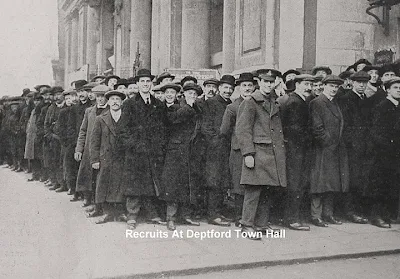THE LAST LAUNCH AT DEPTFORD.
Loyally and Lovingly Dedicated by Mil. Punch to
H.RH. Princess Louise.
If there’s a spirit of the tree, as fair Greek fable tells.
And the green blood of the Dryad is the sap of acorn-bells,
Not death, but higher life, befalls the Nymphs of the oak-trees
That are squared and shaped, and set to frame the .ships that rule the
seas.
And they were not doleful Dryads, but exulting ones that spread
Their unseen wings for shelter of Louise's gracious head,
As she faced the nipping March wind, like a daughter of the sea,
To christen the last war-ship that from Deptford launched will be.
Lift high the wine, sweet Princess, and with blood-red baptism crown,
The bows, slow creeping streamwards, as the dog-shores are struckdown:
And, fit name for last heart of oak that from Deptford-slips shall glide, Bid " God speed" to The Druid, as she curt'sies to the tide.
"tis the last launch from Deptford: the old yard has had its day;
Times change and war-ships with them: oak yields to iron's sway:
There are wider slips and statelier sheds, and broader quays elsewhere,
And Wisdom says "concentrate," and Thrift says "save and spare."
Deptford is now a frowsy place, ill-smelling, dank and low,
Where muddy banks are eat away by a foul stream's festering flow:
Where low Vice haunts and flaunts, and flares, fed full on sailors' gains,
And threatening them with surer wreck than all lee-shores or mains.
But the Deptford that we look on, to whose yard we bid good bye,
Was once the Deptford, where, in pride. The Great Harry wont to lie;
Whore, lusty King to lordly ship, from his Greenwich palace near,
Bluff King Hal among his shipwrights showed broad breast and face
of cheer.
With delicate Anne Boleyn upon his brawny arm—
Lamb and Lion,—monarch's majesty, enhancing woman's charm—
To mark, well-pleased, how in his yard the work sped swift along,
From fair keel to tall top-side of swift pink and carrack strong.
And rapid ran the Ravensbourne, a cleanly country stream,
Glassing in its bright bosom, brave attire, and banners' gleam,
When, fene'd in tower of jewelled ruff and tun of pearled robe,
Came good Queen Bess to welcome Captain Drake from round the
globe!
'Twas in this very Deptford creek was drawn The Golden Hind,
Fragrant with spices of New Spain, rich with heap'd spoils of Ind,
As to bold Queen bold Buccaneer knelt on his own deck-board
Plain Captain Drake, and rose again Sir Francis from her sword.
'Twas in Deptford yard, from reign to reign, the Petts * their credit
won, Handing their craft of ship-builder from famous sire to son; To Deptford smug Sam Pepys took boat, in Charles's thriftless day, To note "how still our debts do grow, and our fleet do decay."
And hither, from the fair-trimmed yews and hollies of Sayes Court,
Came a burly, bull-necked Muscovite, for labour and disport;
Sturdy swinker, lusty drinker; king with king, and tar with tar,
The Northern Demiurgus, Russ Prometheus, Peter Tzar.
Richer in slips and stores and sheds, there be other yards, I trow,
But none more rich in memories. Old Deptford yard, than thou.
It was well done and worthily of a Princess fair and sweet,
To christen the last war-babe, born of thee into our fleet.
And may The Druid ne'er disgrace the parentage she'owns,
Or mar the glorious memories that spring from Deptford stones:
May she bear her worthy England, and the white hand that but now
Has dashed the wine of baptism upon her shapely bow!
• The Petts wore the hereditary ship-builders of the English navy from the days of James The FiRst to those of James The Second.
 On the right of this photo is an ornate building which Michael thinks he identifies as the Unitarian Baptist Chapel.
On the right of this photo is an ornate building which Michael thinks he identifies as the Unitarian Baptist Chapel.


